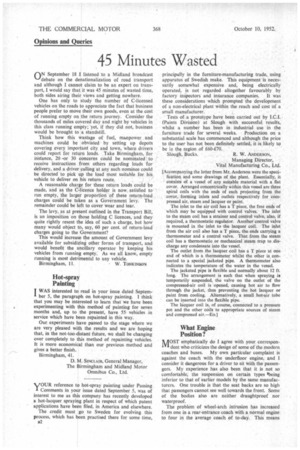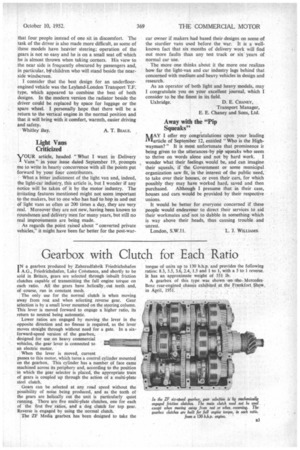What Engine Position?
Page 36

Page 37

If you've noticed an error in this article please click here to report it so we can fix it.
mosT emphatically do I agree with your correspon"I dent who criticizes the design of some of the modern coaches and buses. My own particular complaint is against the coach with the underfloor engine, and I consider it dangerous for a driver to sit with the passengers. My experience has also been that it is not so comfortable, the suspension on certain types +being inferior to that of earlier models by the same manufacturers. One trouble is that the seat backs are so high that passengers cannot see well towards the front. Some of the bodies also are neither draughtproof nor waterproof.
The problem of wheel-arch intrusion has increased from one in a rear-entrance coach with a normal engine to four in the average coach of to-day. This means
that four people instead of one sit in discomfort. The task of the driver is also made more difficult, as some of these models have heavier steering; operation of the gears is not so easy and he is on a small seat off which he is almost thrown when taking corners. His view to the near side is frequently obscured by passengers and, in particular, by children who will stand beside the nearside windscreen.
I consider that the best design for an underfloorengined vehicle was the Leyland-London Transport T.F. type, which appeared to combine the best of both designs. In the modern version the radiator beside the driver could be replaced by space for luggage or the spare wheel. I personally hope that there will be a return to the vertical engine in the normal position and that it will bring with it comfort, warmth, easier driving and safety.
Whitley Bay. A. T. BEALE.












































































